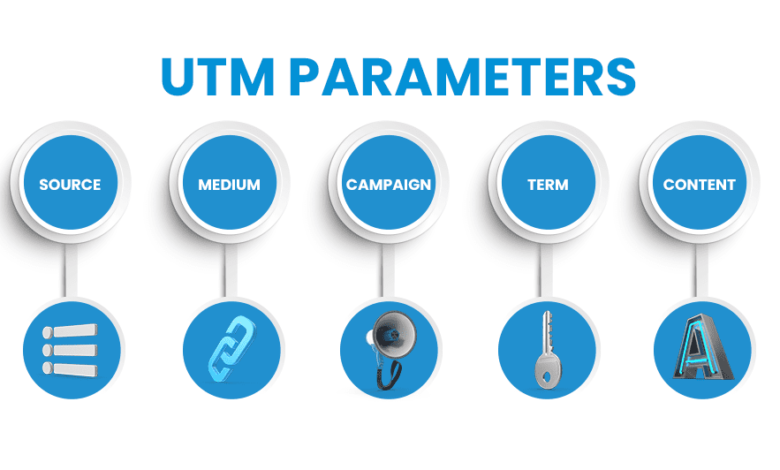What Are The Important 10 FAQS About UTM Parameters

If you’re running a website or digital marketing campaign, chances are you’ve come across UTM parameters. But what exactly are they and why are they so important? In this blog post, we’ll cover the top 10 frequently asked questions about UTM parameters that every marketer should know. From creating them to tracking results, we’ll explore everything you need to know about UTM parameters and how they can benefit your business. So grab your coffee and let’s dive in!
What are UTM parameters?
UTM parameters are tags that you add to a URL in order to track the performance of your marketing campaigns. These tags help you understand where your traffic is coming from, how users interact with your content, and which channels are driving the most conversions.
The acronym UTM stands for “Urchin Tracking Module,” which comes from Urchin Software Corporation – a web analytics company acquired by Google in 2005. Today, UTM parameters are used widely across different platforms such as Google Analytics, HubSpot, and Adobe Analytics.
A typical UTM parameter consists of five components: campaign source (utm_source), medium (utm_medium), campaign name (utm_campaign), term (optional – utm_term), and content (optional – utm_content). By adding these components to your URLs, you can easily identify where traffic is coming from when they land on a specific page or website.
For example, if you’re running an email marketing campaign promoting a new product launch on Facebook Ads targeting women aged 25-35 years old living in New York City who are interested in fashion using the keyword “summer dresses”, then you may use this link:
www.mywebsite.com/new-collection?utm_source=facebook&utm_medium=cpc&utm_campaign=new-product-launch&utm_term=summer-dresses&utm_content=female-25-to-35-nyc-fashion
In the next section we’ll discuss how to create UTM parameters step-by-step!
How do I create them?
One of the best things about UTM parameters is how easy they are to create. All you need to do is add some simple tags onto the end of your URLs, and voila! You’re good to go.
To create a UTM parameter, start by deciding what information you want to track. This could be anything from the source of your traffic (e.g. Google or Facebook) to the specific campaign that brought them in (e.g. Black Friday Sale). Once you’ve decided on this information, it’s time to start adding tags.
The first tag you’ll need is “utm_source”. This will tell Google Analytics where your traffic is coming from – for example, Facebook or Twitter. Next up is “utm_medium”, which tells Analytics what type of link was clicked – for example, email or social media post.
After that comes “utm_campaign”, which provides more detailed information about the specific campaign being run – like our Black Friday sale example earlier. There’s “utm_term” and “utm_content”, which let you track individual keywords and pieces of content respectively.
With all these tags added together at the end of your URL, you can easily see exactly where your website visitors are coming from and how they’re interacting with your campaigns online!
What is the best tool to use for creating UTM parameters?
When it comes to creating UTM parameters, there are multiple tools available that can help you streamline the process. However, identifying the best one can be a little tricky as each tool has its own set of features and functionalities.
One of the most popular tools for generating UTM parameters is Google’s Campaign URL Builder. This free tool allows you to create customized URLs by inputting relevant information like source, medium, campaign name etc., which will then generate a unique URL with your specified parameters.
Another great option is Bitly. Aside from shortening URLs, this platform also offers advanced tracking and analytics features that allow you to monitor traffic sources and measure ROI more accurately.
If you’re looking for something more comprehensive than just a UTM parameter generator, consider using marketing automation platforms such as Hubspot or Marketo. These platforms not only offer UTM parameter creation but also provide other marketing solutions like lead capture forms and email campaigns all in one place.
The ultimate decision on which tool to use depends on your specific requirements and budget constraints. It’s important to do some research beforehand so that you can choose the best fit for your needs.
What are the benefits of using UTM parameters?
Using UTM parameters offers a range of benefits, and it’s essential to understand them if you want to run successful marketing campaigns. One of the main advantages is that they provide detailed information about your campaign’s performance, helping you measure its effectiveness accurately.
With UTM parameters, you can track how many people clicked on your link and where they came from. This data enables you to identify which channels are driving the most traffic and conversions so that you can optimize accordingly.
Another advantage is that UTM parameters enable better segmentation of website visitors. You can see which ads or links brought users to specific pages on your site, allowing for more targeted messaging based on their behavior.
Additionally, using UTM parameters in conjunction with Google Analytics allows for more advanced tracking features such as analyzing bounce rates or goal completions per source/medium/campaign.
Utilizing UTM parameters provides an excellent opportunity for marketers to analyze their campaigns’ performance thoroughly while offering valuable insights into customer behavior trends.
How do I track my results with UTM parameters?
Once you have created your UTM parameters and added them to your website links, it’s time to track their performance. Tracking your results with UTM parameters is essential for measuring the success of your marketing campaigns.
The first step in tracking your results is setting up Google Analytics. Once you have set up your account and linked it to your website, you can start tracking the traffic generated by each UTM parameter.
To view the data specific to a particular UTM parameter, go to Acquisition > Campaigns > All Campaigns in Google Analytics. From here, select the campaign you want to analyze and click on “Source/Medium” or “Ad Content” tabs depending on how you’ve set up UTMs.
You can also create custom reports that provide more detailed information about how each UTM parameter performs across different metrics such as bounce rate, conversion rate, and revenue generated per visitor.
By regularly analyzing these reports, you can identify which campaigns are performing well and which ones need improvement. This will help optimize future campaigns based on what works best for your target audience – ultimately driving better ROI for all of marketing efforts!
What are some common mistakes people make with UTM parameters?
UTM parameters are a powerful tool that can help you track the performance of your marketing campaigns. However, there are a few common mistakes that people make when working with UTM parameters.
One mistake is not using consistent naming conventions for your UTM parameters. This can lead to confusion and makes it difficult to compare data across different campaigns. To avoid this, develop a consistent naming convention and stick to it.
Another mistake is not including all relevant information in your UTM parameters. For example, some marketers forget to include the campaign medium or source in their URLs. This can result in incomplete data sets that don’t provide accurate insights into campaign performance.
Additionally, some marketers fail to properly tag all of the links associated with their marketing campaigns. Without proper tracking, you won’t be able to see which channels or pieces of content are driving traffic and conversions.
Failing to regularly check and analyze your UTM parameter data means you miss out on valuable insights that could improve future campaigns.
Avoiding these common mistakes will ensure that you’re getting the most out of your UTM parameter tracking efforts!
How can I learn more about using UTM parameters?
If you’re looking to learn more about using UTM parameters, there are several resources available online that can help you get started. Here are a few ways to expand your knowledge:
1) Google Analytics Help Center – This is the official resource from Google that provides information on how to set up and use UTM parameters in your campaigns.
2) Online Courses – There are many free and paid courses available online that cover topics like digital marketing, analytics, and campaign tracking. Some popular options include Udemy, Coursera, and LinkedIn Learning.
3) Blogs & Forums – Many marketing blogs have published articles about UTM parameters over the years. You can also participate in forums like Reddit or Quora where marketers discuss best practices for tracking their campaigns with UTMs.
4) Social Media Groups – Facebook groups or Twitter chats dedicated to digital marketing often feature discussions around tracking tools including UTMs. Join these groups to learn new strategies or seek advice from experts.
No matter which method you choose, always keep an eye out for updates on best practices as they evolve quickly!
Conclusion
UTM parameters are an essential tool for tracking your website’s traffic and measuring the effectiveness of your marketing campaigns. By incorporating these simple tags into your URLs, you can gain valuable insights into who is visiting your site and how they got there.
Creating UTM parameters is a straightforward process that requires little technical knowledge. The key is to use consistent naming conventions and track everything in a spreadsheet or analytics dashboard so that you can accurately measure your results over time.
While there are many tools available for creating UTM parameters, Google’s Campaign URL Builder remains one of the most popular options due to its simplicity and ease of use.
Remember that using UTM parameters is not just about adding more data to your reports – it’s about gaining actionable insights that can help you optimize your marketing efforts and drive better results. So take some time to learn more about this powerful tool today, and start unlocking the full potential of your website’s traffic data!




